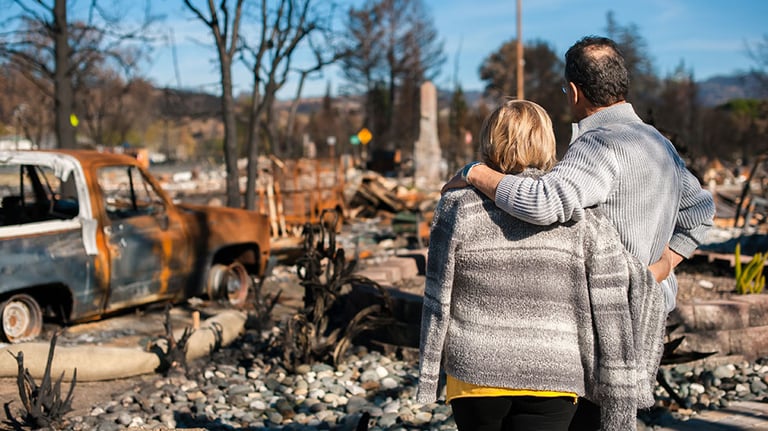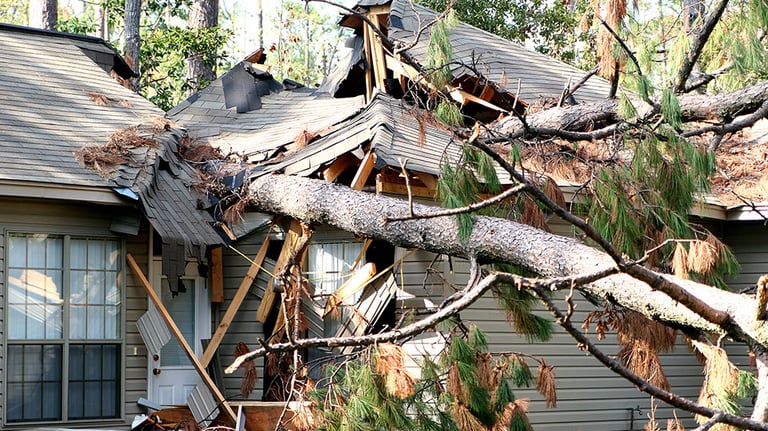
Many homeowners set their insurance policies and forget about them. But homeowners insurance only covers so much. So, to help you ensure you have an adequate amount of coverage to protect your home, here’s what typical homeowners insurance covers, what it doesn’t, and what extra coverages some homeowners may want to consider.

What does homeowners insurance protect?
A standard home insurance policy is usually a combination of several coverages designed to protect your home and your personal possessions.
Dwelling coverage
This type of coverage protects the structure of your home from damage or destruction. So, if a tornado demolishes your garage, your insurance will cover the cost to rebuild it. Also, this type of coverage protects additional structures on your property, such as a fence or detached garage.
Personal property coverage
In addition to protecting the structure of your home, insurance protects your personal belongings from damage or destruction. Personal belongings can include appliances, clothing, furniture, rugs, or anything else inside your home. Insurance companies usually limit personal property coverage to 50% to 70% of your dwelling limits. So, if you have a $200,000 of dwelling coverage, you may receive $100,000 of personal property coverage. Certain items like jewelry and electronics may have other limits. So, if you think you need extra coverage for your expensive goods, you can “schedule” or add extra coverage to make sure you’re fully protected.
Liability coverage
This type of coverage pays for injuries or property damage to other folks that you’re liable for. So, if someone one slips on your sidewalk and decides to sue you for injuries and other damages, liability insurance will cover their medical bills and other legal costs associated with the lawsuit. Usually, liability coverage limits start at $100,000. However, if you have a substantial amount of assets that are at risk of costly litigation, you could up your coverage limit.
Loss of use coverage
If something happens to your home making it uninhabitable, loss of use coverage can pay for your accommodations, food expenses, and other costs until your home is repaired. Typically, this type of coverage is a certain percentage of your dwelling coverage. For example, if you have $200,000 of dwelling coverage and your loss of use coverage is 30%, you will receive up to $60,000 of Coverage.

Problems covered in a homeowners insurance
In your certificate of insurance, your insurance company lists the “perils” or problems that they cover. Usually, homeowners insurance policies cover loss from:
- Fire
- Lightning
- Wind or hail
- Theft
- Vandalism
- Weight of snow or ice
- Falling objects
So, if a tree falls through your roof, your insurance will pay to repair the damage (after the deducible is met). Or, perhaps, a kitchen fire breaks out. Your insurance will cover the cost of repairs.

What does homeowners insurance usually not cover?
Although homeowners insurance policies cover an extensive amount of issues, there are some things that are excluded from coverage. Some examples of exclusions include:
- Neglect
- War
- Ordinance law, which means the government requests a property be demolished, renovated, or repaired to meet needs of ordinance laws
- Wear and tear
- Earth movement, such as earthquakes or mudslides
- Water damages resulting from issues such as flooding or sewage back-up
- Birds, rodents, insects, or vermin
- Rust, smog, or dry rot
- Power failure
- Intentional loss
- Government action such as property seizure

Homeowners insurance coverage add-ons
Depending on your unique circumstances, adding extra coverage to your policy might be a smart choice. For example, since home insurance usually doesn’t cover water damage, such as flooding, buying flood insurance can protect your home if you live in an area prone to flooding. Likewise, if you live close to a fault line, earthquake coverage might be necessary.
Here are some other coverages worth considering.
Scheduled personal property coverage. Your home insurance policy may have set limits for certain items in your household, like jewelry, furs, or antiques. For this reason, it’s wise to schedule valuable property. This way, if something happens to your valuables, you’ll receive full reimbursement for your items.
Water backup coverage. Your home insurance policy usually doesn’t cover damages resulting from water back-up like when your sump pump fails and floods your basement. Water back-up coverage can pay for specific repairs if this situation happens to your home.
Building code coverage. If your property is not up to the current building code and then gets damaged, homeowners insurance usually won’t cover the cost to get it up to code. Building code insurance can fill in this coverage gap.
Identify theft coverage. When your identity gets stolen, it might cost you a significant amount of money and time to restore your name. Identify theft coverage can pay for some of the cost involved, such as legal fees or lost wages.
Your home insurance provider may offer a wide range of extra coverage options. So, speak with your agent about the coverages that you might need in your neck of the woods.

